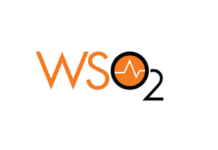New Delhi, November 25, 2018: The Union Finance Minister, in his Budget speech of February 2018, had announced the launch of the National Health Protection Mission (NHPM), a health insurance scheme for 10 crore families (~50 crore beneficiaries), making it the biggest state-run health insurance scheme in the world. As per an ICRA note, the launch of healthcare insurance, particularly for the marginalised sections of society, is a step in the right direction, especially given the fact that India’s track record on healthcare expenditure has been poor, with the country spending well below the world average and the per capita spend being lower than that of several developing countries. Further, the expenditure has historically been met through out-of-pocket expenses due to low health insurance penetration and more than 84% of the population is not covered by any insurance scheme.
Says Mr. Shubham Jain, Group Head and VP, ICRA Ltd, “A scheme of this magnitude has its own challenges. First, many health service providers, particularly the large corporates with good infrastructure and reputed doctors, may not find it feasible to provide the services at the current package rates (notwithstanding the incentives over the base package rates). Secondly, the empanelment of a large number of hospitals and their proximity to the patients, especially in the rural areas, will be critical for the effective implementation of the scheme. Thirdly, the modest premium and expectation of high claim ratios may deter insurance companies from participating in the scheme, and lastly, the rollout is likely to face major technological hurdles.”
On the positive side, ICRA expects that the NHPM will lead to an improvement in occupancies at implementing hospitals, albeit with lower profit margins. The scheme is expected to be a major positive for hospitals in the non-Tier I cities, particularly for providers with low occupancies and/or those that are positioned for affordable care. With an increase in occupancies, the viability of such private hospitals is expected to improve.
Adds Mr. Jain, “With the NHPM, the secondary and tertiary care providers, especially affordable players in non-Tier I cities, are likely to benefit substantially. However, larger players may not be able to generate the desired returns at current package rates due to their high cost structure. Despite the short-term challenges due to regulatory restrictions, the long-term outlook on the hospital sector remains Stable as structurally, things are stacked in favour of the sector. A significant shortage of beds, rising disease burden, an ageing population, increasing per capita healthcare expenditure and medical insurance are long-term positives for the sector.”
In Q1 FY2019, the occupancy level for ICRA’s sample set remained stable, at ~63%, despite new bed additions. The companies in the sample witnessed healthy growth in volumes (barring one player facing internal challenges). However, the average revenue per occupied bed (ARPOB) and revenue growth were muted with profitability margins witnessing a dip largely on account of regulatory interventions and start-up costs of new hospitals.
On account of the increase in debt and pressure on OPBITDA, the interest coverage ratio of the sample set has dropped from 2.73 times in FY2017 to 2.44 times in FY2018 and the net debt/OPBITDA has deteriorated from 3.08 times as on March 31, 2017 to 3.33 times as on March 31, 2018. The aggregate debt coverage indicators of the sample set include the impact of non-hospital businesses as well, such as standalone pharmacies and diagnostics services, which have fared much better.
Corporate Comm India(CCI Newswire)























